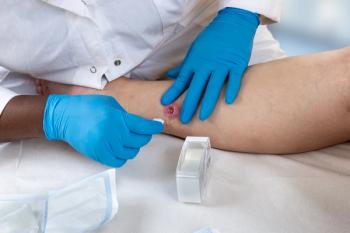
Remote Monitoring Can Reduce Radiation-Related Symptoms in Head and Neck Cancer
Use of the mobile and sensor technology, CYCORE—CYberinfrastructure for COmparative Effectiveness Research—to remotely monitor symptoms in patients with head and neck cancer (HNC) undergoing radiation therapy found CYCORE patients had lower symptoms overall and specific to HNC. These results are a part of the research to be presented at the upcoming 2018 American Society of Clinical Oncology Annual Meeting, June 1-5, Chicago, Illinois.
Use of the mobile and sensor technology, CYCORE—CYberinfrastructure for COmparative Effectiveness Research—to remotely monitor symptoms in patients with head and neck cancer (HNC) undergoing radiation therapy found CYCORE patients had lower symptoms overall and specific to HNC.
The study,1 to be presented at the 2018 American Society of Clinical Oncology Annual Meeting, June 1-5, Chicago, Illinois, was included in a press cast that was broadcast ahead of the meeting.
According to the National Cancer Institute, over 51,500 individuals will be diagnosed with HNC in 2018, accounting for over 3% of new cancer diagnoses for the year. While the 5-year survival rate of this cancer hovers close to 65%, a little over 10,000 patients are estimated to die from the disease this year in the United States. HNC patients have high risk of symptom burden and risk of dehydration.
Chemotherapy, surgery, and radiation therapy are the forms of treatment available for patients with HNC, but the treatment plan is determined based on disease stage, potential side effects, and the patient’s overall health and preferences. Patients who receive radiation therapy may experience significant
Researchers from across 4 institutions, who designed and implemented the current trial, used CYCORE to compare remote patient monitoring using a mobile and sensor technology with usual patient care among 357 patients (a majority of whom were male): 169 in the CYCORE arm and 188 in the usual care arm of weekly doctor visits. Patients in the CYCORE arm were provided with blood pressure cuffs and weight scales that were Bluetooth-enabled; additionally, they were given mobile tablets with proprietary Wi-Fi. Sensor readouts were transmitted to firewall-protected computers through a secure mobile app to ensure data protection.
The real-time readouts were reviewed on a daily basis by physicians, which would allow for an early intervention if needed. Patients in both groups had a weekly in-person visit with their physician.
Patients filled out the 28-item
The study found that while there was no difference in self-reported health severity scores between the 2 groups at the start of the trial, MDASI scores of the CYCORE group were lower for severity of general (2.92 vs. 3.4; P =.003) and HNC-specific symptoms (4.21 vs 4.83; P =.009) at the completion of the radiation treatment. Similarly, MDASI scores were lower for the CYCORE group at 6 to 8 weeks after completing radiation, for both general (1.69 vs 1.96; P =.003) and HNC-specific symptoms (1.78 vs. 2.11; P =.009).
“Our study generated evidence on how newer technologies can be integrated into cancer care relatively easily and improve patient outcomes without interfering too much in a person’s daily life,” said lead study author Susan K. Peterson, PhD, professor, Department of Behavioral Science, The University of Texas MD Anderson Cancer Center, Houston, in a press release. “This study was done during a rather intense period in the patients’ care for head and neck cancer. The system helped their physicians to provide valuable support that ultimately resulted in lower symptom severity.”
An important observation was the high rate of adherence in a majority of patients, despite the intensity of treatment.
“Using mobile tech for remote monitoring of patients during critical periods of outpatient treatment can provide timely info for clinical decision making and can improve QOL [quality of life] and health outcomes,” the authors concluded.
Reference
1. Peterson SK, Garden AS, Shinn EH, et al. A study exploring the use of mobile and sensor technology to monitor symptoms in patients with head and neck cancer receiving radiation therapy. J Clin Oncol. 2018;36(suppl; 6063 abstr).
Newsletter
Stay ahead of policy, cost, and value—subscribe to AJMC for expert insights at the intersection of clinical care and health economics.

















































